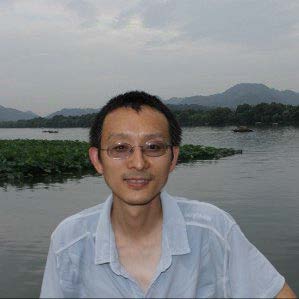Date/Time
Date(s) - 03/29/2024
9:00 am - 10:00 am
Category(ies)
Jianhua Xing, PhD
Associate Professor, University of Pittsburgh
Date: Friday, March 29, 2024
Time: 9:00 a.m.
Location: PSH 152
Abstract
High-throughput techniques, especially at the single cell level, have greatly expanded our knowledge of cellular processes. With the increasing availability of data, a fundamental question arises: how can we leverage this data to gain mechanistic insights? Unlike static data typically targeted by statistics-based machine learning approaches, single cell data are snapshots from the dynamical state space of a cell having interacting components that dictate the temporal evolution of the system. Consequently, we witness a growing convergence of two disciplines: data science and systems biology1. The latter seeks to unravel qualitative and quantitative causal relationships among cellular components, as well as their functions within the broader context of cell regulatory networks, all through the lens of dynamical systems theory, towards an ultimate goal of engineering and controlling cell state transition dynamics. I will briefly summarize some of our recent efforts on analyzing single cell data through the lens of systems biology2-5. Specifically, I will focus on how a combination of scRNA-seq and live cell imaging studies reveal how the epithelial-to-mesenchymal transition (EMT) couples to cell cycle arrest with a surprising backward G2/M to G1/S transition through mitotic skipping6.
BioSketch
Biography: Dr Xing received B.S. in Chemistry from Peking University, M.S. in Chemical Physics from University of Minnesota, and PhD in Theoretical Chemistry from UC Berkeley. After being a postdoc researcher in theoretical biophysics at UC Berkeley and an independent fellow at Lawrence Livermore National Laboratory, he assumed his first faculty position at Virginia Tech, then moved to University of Pittsburgh in 2015. Currently Dr Xing is a professor in the Computational and Systems Biology Department, School of Medicine, and an affiliated faculty member of Department of Physics and Astronomy, University of Pittsburgh. He is also an affiliated member of University of Pittsburgh Hillman Cancer Center. Dr Xing’s research uses statistical and chemical physics, dynamical systems theory, mathematical/computational modeling in combination with quantitative measurements to study the dynamics and mechanics of biological processes.
1. Xing, J. Reconstructing data-driven governing equations for cell phenotypic transitions: integration of data science and systems biology. Physical Biology 19, 061001 (2022).
2. Wang, W., Poe, D., Yang, Y., Hyatt, T. & Xing, J. Epithelial-to-mesenchymal transition proceeds through directional destabilization of multidimensional attractor. eLife 11, e74866 (2022).
3. Wang, W. et al. Live-cell imaging and analysis reveal cell phenotypic transition dynamics inherently missing in snapshot data. Science Advances 6, eaba9319 (2020).
4. Qiu, X. et al. Mapping Transcriptomic Vector Fields of Single Cells. Cell 185, 690-711 (2022).
5. Zhang, Y. et al. Graph-Dynamo: Learning stochastic cellular state transition dynamics from single cell data. bioRxiv, 2023.09.24.559170 (2023).
6. Hu, S. et al. Inferring cell state transition dynamics from single cell data requires proper representation and dynamical information. to be submitted (2023).
